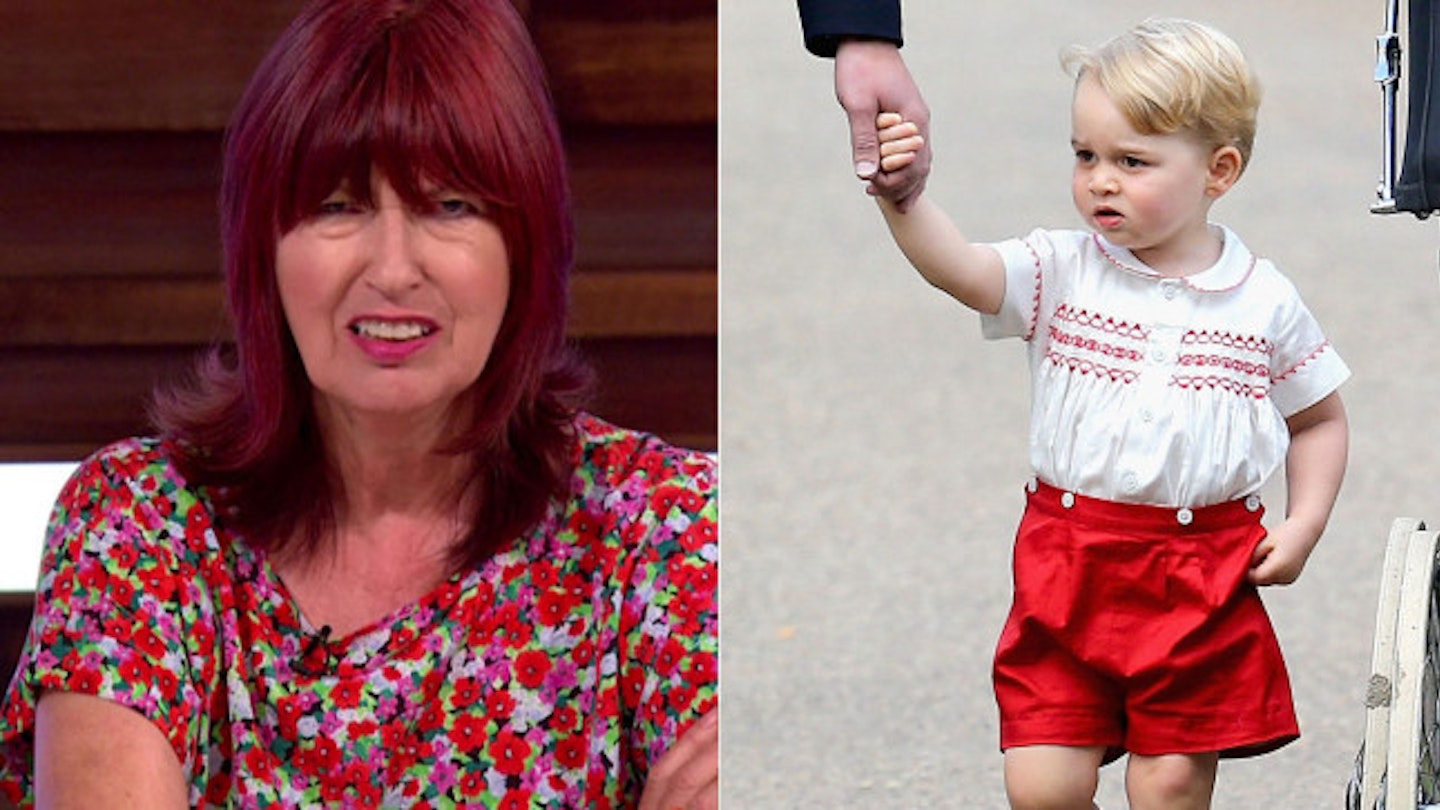Janet Street-Porter caused outrage this morning, after she likened Prince George to a cross-dresser.
Speaking on Loose Women, Janet said of the little prince: “Quite frankly he looks like a cross-dressing millionaire.”
As the audience gasped in shock, she added: "He does, he's a millionaire, and he's got a girl's blouse on."
Is Janet Street-Porter a neanderthal?
Back in the bad old days, yes, people believed firmly that blue is for boys and pink is for girls - but they also believed that gay people could be ‘cured’ and black people should be slaves.
Times have changed - and people REALLY need to get with the programme.
First things first, I’m not even going to explain why we shouldn’t be using the phrase ‘cross-dressing’ as an insult; it’s a way of life for some people, and it’s not a phrase which can be bandied around willy-nilly by self-employed fashion police.
Secondly, there’s the very obvious fact that, until they hit puberty, girls and boys have the same bodies.
A child’s gender assignment at birth - based on external genitalia – should never be allowed to dictate what they are “allowed” to do.
If you like pink tutus, or patterned peasant blouses, or trucks, or dolls, you should be able to like them with acceptance - regardless of your sex.
It's exactly the same as when North West’s parents were criticised for dressing her ‘like a boy’; the famous tot has been papped wearing a lot of monochrome, and plenty slammed Kim Kardashian for refusing to pop her tot in a pink dress.
But the reality star should have been PRAISED for freeing her little girl from the restrictive confines of gender boxes. After all, you don’t have to announce the sex and/or gender of your child via the outfit.
If people really can’t cope with not knowing for sure, they can always ask.
We need to take a leaf out of the books of hospitals; when a newborn baby arrives on a maternity ward, they are wrapped up in a plain white blanket. Simple.
Stereotypes are damaging… and they are generally only used by bullies and bigots. So we need to stop telling children what they can and can’t like, wear or do, based on whether they’re boys or girls.
They should be able to do whatever they like, and be whoever they want to be.
End of.
